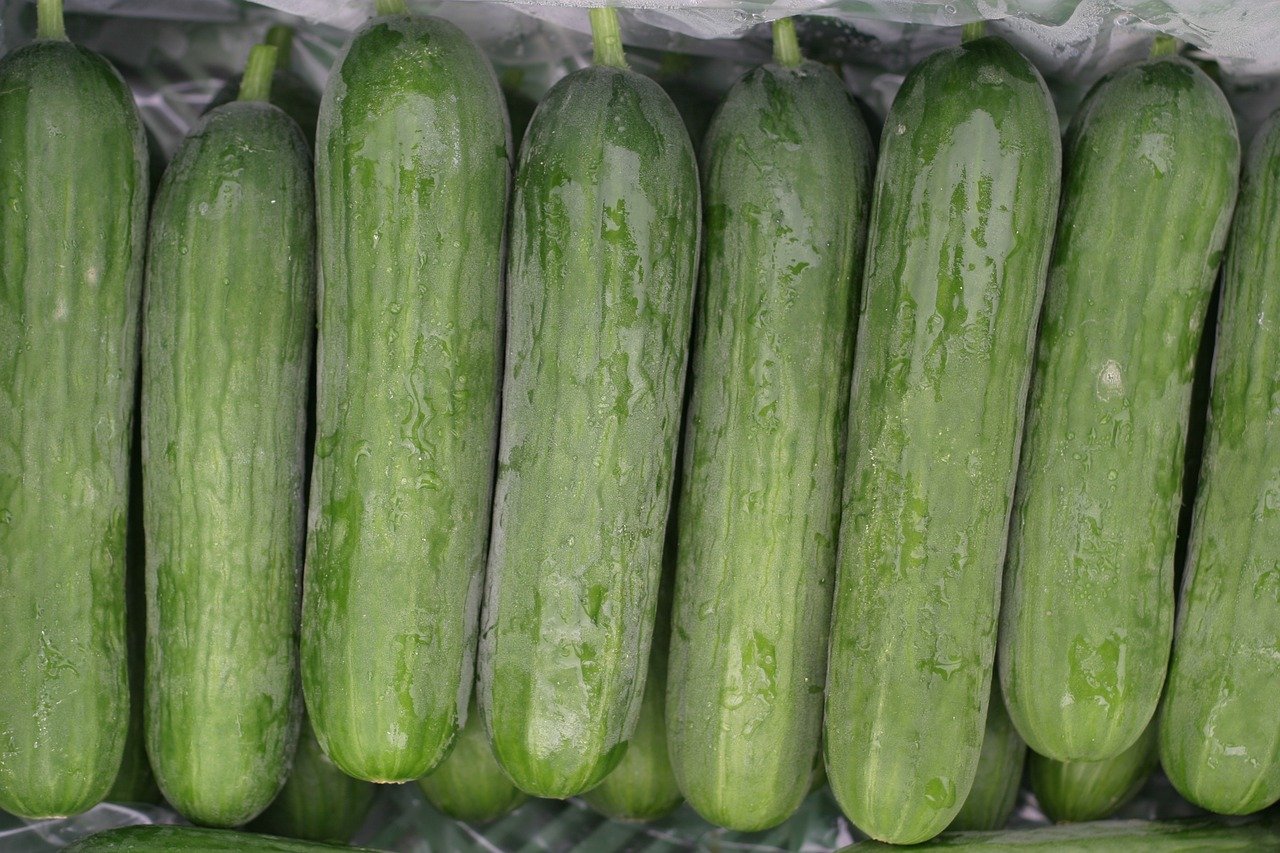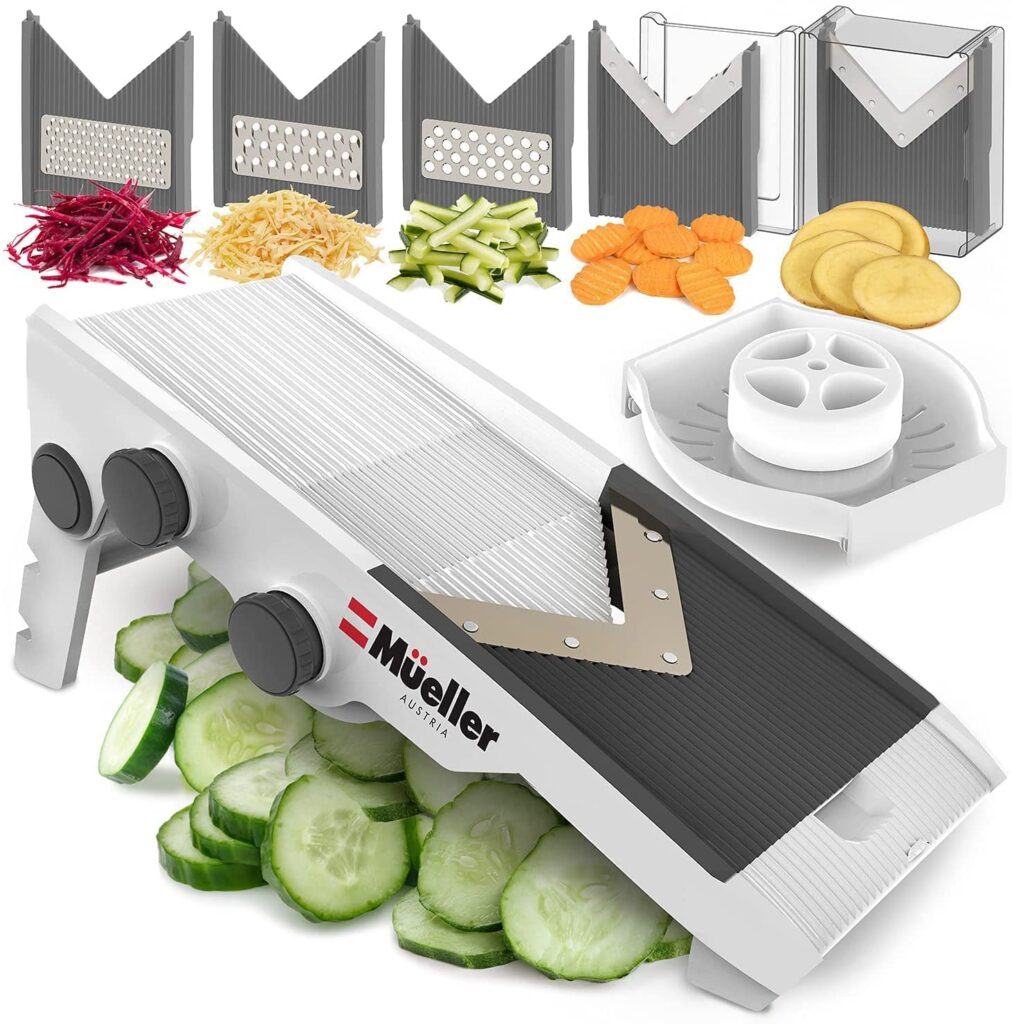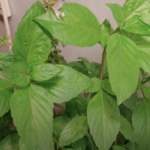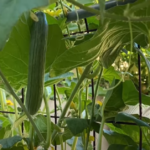Persian cucumber is an heirloom or hybrid bitterless cucumber cultivar well known for its sweet mild taste, thin spineless skin and crunch. The Persian cucumber has many varieties and is also known as the Beit Alpha, Beit Alfa, Middle Eastern cucumber, Lebanese cucumber and sometimes called mini-cucumber. This cucumber is considered among burpless cucumbers owing to its low level of the compound cucurbitacin. It has thin edible skin and very few tiny seeds which mainly remain underdeveloped.
Table of Contents
Introduction
The name Persian cucumber is an umbrella term that refers to a variety of cucumber types that emerged out of northern Israel (see origins section). Examples of such varieties include Socrates, Katrina, Iznik, Ishtar and Picolino cucumbers among others. Persian cucumbers like other cucumber cultivars, we have in mind here the English cucumber, Lemon cucumber and a variety of other regular and burpless cucumbers, share in the same species – Cucumis sativus. There is also the look-alike Armenian cucumber which is however a different variation of genus Cucumis.
Persian Cucumber Characteristics
Typically, Persian cucumbers grow very small between 4 and 6 inches or 10 and 15 cm in length. This explains their other names i.e. mini cucumbers or Green Baby Fingers. They have a cylindrical shape which conforms to other regular cucumbers in the Cucurbitaceae, or gourd family. In addition, they have smooth, thin, edible and easily digestible dark green skin which makes them ready for use raw.
Persian varieties are grouped with burpless cucumbers thanks to their sweetness, digestible skin and underdeveloped seeds. In the negative, these factors have been known to trigger stomach problems in some consumers including burps.
Although considered burpless, the Persian cucumber is better harvested at a certain optimal size – usually 6 inches – when it is crunchiest and most flavorful. If let to grow beyond this size, the cucumber can become too large, watery and spongy.
Yet another common characteristic of some Persian cucumber varieties is that they are parthenocarpic. This means they can produce fruit without need for pollination. This is very significant. It is one of the reasons this cultivar produces fruit with very little or underdeveloped to no seed.
Nonetheless, parthenocarpic cucumbers are not only limited to the Persian cucumber but are also found in English cucumber varieties. It must, however, be noted that if pollination occurs later in the season some seeds may form in these cucumbers.
Persian Cucumber Origins
Persian cucumber originated in Beit Alpha, northern Israel. This is how Persian cucumbers became to be alternatively known as Beit Alpha types. According to some accounts, the Persian cucumber started off in the late 1930s as a small tasty cucumber breed by some Europeans of socialist persuasion who had settled in a kibbutz in Israel. One problem that emerged with their breed of cucumbers was susceptibility to disease.
They began breeding the cucumber with varieties from India, Japan, China, Surinam and the United States to address the disease weakness. Furthermore, they brought into the mix seedless English and Dutch cucumber varieties so as to produce a cucumber which was both disease resistant and seedless.
Eventually, the cucumber continued to be developed and improved upon and became popular in the Middle East where it is also known as the Lebanese cucumber. This is the type of cultivar we have today in the Persian cucumber.
Persian Cucumber Varieties and Seeds
As earlier mentioned, the other names of the Persian cucumber are Beit Alpha, Middle Eastern cucumber and Lebanese cucumber. It is therefore common to find Persian cucumber seed listed or sold as Beit Alpha cucumber seed. This generally refers to the same variety or at least cucumber varieties that emerged out of Beit Alpha in northern Israel.
One more thing to remember is that Persian cucumbers can be heirloom or hybrid depending on how long they have been around. Heirloom variates are typically many decades old between 50 to 100 years old. On the other hand, hybrid versions are much younger and generally do not qualify to be heirlooms. This article, What is an Heirloom, by Burpee sheds more light on the concept of heirlooms in gardening.
The following are some online sources of Persian cucumber seed in North America.
| Socrates Organic Persian Cucumber Seeds – the Socrates organic is an organic certified Beit Alpha cucumber variety available through West Coast Seeds out of Canada. The seeds are hybrid, producing mature fruit in 52 days. The Socrates is an parthenocarpic cucumber, as already discussed, it can produce fruit without need for pollination. This variety is suitable for cultivation in poly-tunnels, greenhouses, and the open field. Furthermore, the variety is bred for resistance to scab and powdery mildew. View seeds. |
| Ishtar Persian Cucumber Seeds – Ishtar is yet another Beit Alpha type cucumber variety. It is also parthenocarpic just like Socrates. These seeds are hybrid, producing mature fruit in some 52 days. Ishtar seeds will bring up a plant that has considerable resistance to powdery mildew, a cucumber disease that terrorizes many coastal growers in summer. View seeds. |
| Mercury Beit Alpha Cucumber Seeds – these Mercury Persian cucumber seeds are also available through West Coast Seeds. The seeds produce mature fruit for harvest in 55 days. Unlike the foregoing two seed varieties, Mercury is a hybrid Beit Alpha variety that requires pollination. This is to say the seeds are not parthenocarpic. Nonetheless, the fruit will have tiny seeds which still makes it a burpless cucumber. The planting seeds are for open field cultivation although they would also do well in greenhouses. View seeds. |
| Sow Right Beit Alpha Cucumber Seeds – these Beit Alpha seeds are Non-GMO heirloom seeds available through Amazon. They are supplied by Sow Right Seeds out of the United States. The seeds are sold in the smallest 1 gram packet with about 39 seeds in it. The seeds are parthenocarpic and can be grown in the open field or in a greenhouse. Some growers have recommended avoiding growing these seeds among other cucumber varieties as this might affect productivity of this variety. View seeds. |
| Picolino Organic Persian Cucumber Seeds – these seeds produce the often highly recommended Picolino organic cucumber. Compared to the other seeds we have already considered, the Picolino takes much longer to mature at 70 days. The seeds are hybrid and certified organic as sold by West Coast Seeds. Picolino cucumbers are seedless and parthenocarpic. They are however slightly different from other Persian cucumber varieties in that they are slightly ribbed although with the expected thin edible skin. The seeds produce vines that can withstand certain viruses, powdery mildew, scab, and target leaf spot. View seeds. |
Persian Cucumber Recipes
Persian cucumbers are primarily utilized raw in a variety of culinary applications. We have in mind here salads, sandwiches and burgers as some of the intrinsic recipe applications. The cucumbers can also be used in combination with other herbs and vegetables such as basil, eggplants and sweet peppers. Furthermore, Persian cucumbers are often used in recipes in combination with other cucumber types such as lemon cucumbers.
The following is an interesting list of scrumptious Persian cucumber recipes to give a try. Also included are some Persian cucumber salads.
| Mixed Veg and Herb Salad Recipe – this recipe is called the Shiraz Salad. It is essentially a combination of Persian cucumber, tomato and onion to create a tasty salad. This salad is a common side dish in Persian cuisine. Other ingredients that go into this recipe are extra virgin olive oil, fresh lemon juice, and fresh herbs which may be mint, cilantro and parsley. The ingredients are diced and mixed together and seasoned. The flavor of the salad is controlled by the type of herbs used in the salad. Above all, this is a super simple salad to make. View Recipe. |
| Maast-o Khiar Recipe – made using Persian cucumber, this recipe is also known as the Persian cucumber yogurt. It produces a dip that features quite frequently in Persian cuisine. After the ingredients are mixed together, the dip is refrigerated for sometime for best results although it may also be served right away without first chilling it. The dip can be served with meat, and starches such as rice and bread. Set aside 1 hr. 15 minutes to make the recipe. Main ingredients are plain yogurt, English or Persian cucumbers, dill and garlic herbs among other items. View Recipe. |
| Asian Cucumber Salad Recipe – this is supposed to be a summer cooling salad taking advantage of the cool cucumber. The recipe requires Persian or Japanese cucumbers which are ideal for their sweet taste, thin, edible skin and also that they do not get watery as other regular cucumbers. Other ingredients will be sesame oil, rice vinegar, roasted peanuts, garlic and soy sauce. The cucumbers are first sliced and then peanuts added as the first step. View Recipe. |
Slicing Persian Cucumbers to Perfection
The majority of cucumber recipe preparations will involve slicing the cucumbers first before use. How the cucumbers are sliced will also matter if the final product out of the recipe is to be appetizing and inviting. For this purpose, we highly recommend using a mandoline for slicing cucumbers. You get professionally sliced ingredients which look appealing in recipes and final presentations. A mandoline will also slice your tomatoes, eggplants, garlic, onions and a variety of other ingredients that also go well with cucumbers. See on Amazon.
Growing Persian Cucumber
Growing Beit Alpha type cucumbers generally follows cultivation culture applicable to Cucumis sativus cucumbers. The basics of growing cucumbers are that cucumbers are warm weather crops, requiring full sun although they may tolerate partial shed.
The soils must be sand loamy with a neutral pH of 7.0. For seeds to germinate quicker, temperatures must be more than 75°F or 24°C. Night and day temperatures must range between 65 and 90°F or 14°C and 32°C.
We highly recommend this resource which dives deep in detail about growing Persian cucumbers. The resource considers climate, light, growing media, care, diseases and pests, plant rotation, harvest and storage.
Conclusion
The Persian cucumber is a Beit Alpha type cucumber whose original birth place is in northern Israel but now available in North America. It is a sweet tasting, seedless, bitterless, thin skinned cucumber suitable for use in a variety of raw culinary applications. This cucumber is also known by its other names of Beit Alpha, Beit Alfa, Middle Eastern cucumber and Lebanese cucumber. It is sometimes also called the mini cucumber. Persian cucumber seeds are easily accessible and can be heirloom or hybrid seeds. The cucumber is also easy to grow and produces the best looking fruit, aesthetically, when trellised.
Random But Good Reads:



